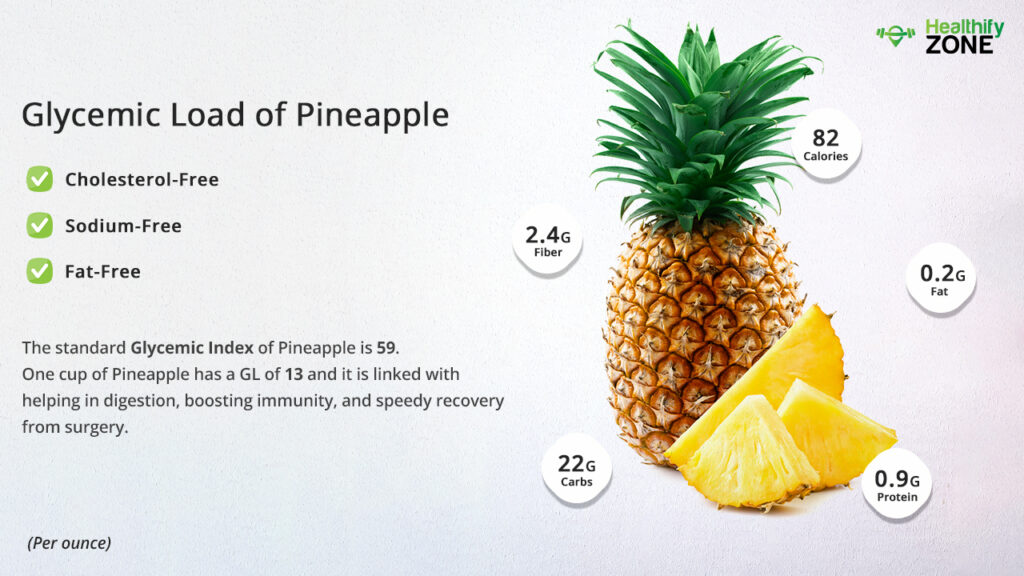Pineapple is an excellent source of vitamin C and manganese, as well as a good source of fiber, B vitamins, and vitamin A. With a glycemic index of 59, it has a substantial amount of sugars (carbohydrates), but because pineapples are typically 86% water, they have a low glycemic load as a whole fruit for a typical 120 gm serving size of 6. Whole fresh pineapple is secure and advised for consumption by diabetics and those at risk of becoming diabetic due to its fiber content and low glycemic load. The protein-digesting enzyme “bromelain,” which is present in the pineapple fruit and stem, has also been demonstrated to support heart health and to possess anticancer and antidiabetic characteristics.

Is Pineapple Safe for Diabetes?
Manganese and vitamin C are both abundant in pineapple. Additionally, it contains fiber, vitamins A and B, as well as a substance called bromelain, which has a number of claimed health advantages. These elements make pineapple a healthy complement to a diet that is suitable for those with diabetes.
Is Pineapple Suitable for Weight Loss?
The pineapple enzyme bromelain aids in enhancing metabolism, which in turn helps burn fat. Additionally, it targets belly fat. But stick to this diet and exercise plan to lose abdominal fat.
What is the Best time to Consume Pineapple?
Eating pineapples on an empty stomach is ideal. Whenever possible, consume them in the morning or late in the day. Avoid eating pineapples just after meals. They should be fine to eat 30 minutes before a meal.
The Bottom Line: The Glycemic Index of Pineapple is 59
In addition to being nutrient-dense, pineapples are also a trove of antioxidants, which protect your body from oxidative stress. Free radicals, unstable chemicals that destroy cells and are a major source of oxidative stress, are also responsible for chronic inflammation, compromised immune systems, heart disease, diabetes, and some types of cancer. Flavonoids and phenolic compounds are two types of antioxidants particularly abundant in pineapples.
Although there is a lack of human data, two rat studies suggest that pineapple antioxidants can have heart-protective effects. Fruits like pineapples are delectable, adaptable, and packed with vitamins and antioxidants. Their minerals and constituents have been associated with remarkable health advantages, such as better digestion, a decreased risk of cancer, and relief from osteoarthritis. More human investigations are yet required. This fruit can be eaten raw, blended, roasted, cooked, or in a variety of other ways.